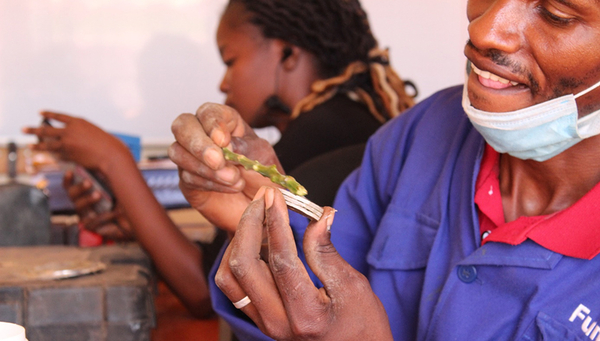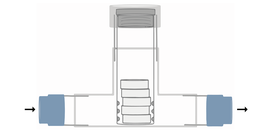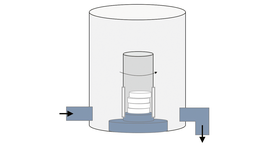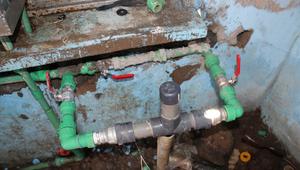News Detail
Prevent drinking water recontamination with passive chlorinators
May 5, 2023 |
Chlorination
Chlorination is a water treatment strategy that provides residual disinfection, reducing recontamination risks during transport and storage. Because studies have found that users’ compliance with chlorinating water in the household can be inadequate, installing a chlorinator at the point of collection would circumvent the need to establish user compliance. This would also increase the proportion of safe chlorinated water available for consumption.
Producing and testing two kinds of chlorinators at Eawag
Although passive chlorinators are available in markets and stores worldwide, their operation and maintenance costs are often prohibitive and limit their use. Locally produced chlorinators can be a good alternative. This Safe Water Promotion research group project constructed and tested two different types of chlorinators at Eawag, the Swiss Federal Institute of Aquatic Science and Technology. These tests were successful and were replicated in Kenya.
The T-chlorinator adapted from Orner et al., by Eawag consists of a cylinder that is placed inside a T-fitting. The cylinder contains the chlorine tablets, which are eroded by the flow of water. The chlorinator is installed in-line between the clean water tank and the kiosk’s tap.
The AkvoTur chlorinator designed by Eawag is installed right after the water tap. At the bottom of the container is a cylinder in which are placed the chlorine tablets. The cylinder has slits on each side; water enters through one slit, eroding the tablets, and exits through the opposite slit.
Producing and testing the chlorinators in Kenya
Both chlorinators were produced with locally available materials and tools in Kenya. They were installed at four water kiosks managed by Fundifix Limited, a local water service provider, in Kitui County in eastern Kenya. The assessment criteria were: can the chlorinators be locally produced and installed, the availability of chlorine supply, their robustness, ease of operation and the dosage consistency.
Passive, locally manufactured chlorination system installed in a water kiosk in Kenya.
(Photo: Lisa Appavou)
The installation of the tap-attached AkvoTur was the fastest and the easiest. It was robust, easy to operate and had a dosage consistency of 69%. The T-chlorinator, however, had a better overall performance. Even though it was more complicated to fabricate and install, it was more robust and had a higher dosage consistency (89%) if automatic drainage was available. The automatic drainage ensures that the water can drain from the T-chlorinator by gravity.
Kenyan research project featured in Sandec News
An article about this Safe Water Promotion research group project in Kenya is just one of many articles in the annual magazine of the Department of Water, Sanitation and Solid Waste (Sandec). Sandec News highlights the department’s current research, as well as information on publications in the sector and digital learning initiatives.
The magazine is available online.
Cover picture: Fundifix staff producing chlorinators in Kenya. (Photo: Lisa Appavou)
Funding / Cooperations
- Fundifix Limited in Kenya
- University of Oxford in UK
Original publication
Bouman L., ‘Locally Produced Passive Chlorinators in Kenya’, Sandec, News, 23 (2022), 48-49.
Links and Documents
Orner K. et al., ‘Effectiveness of in-line chlorination in a developing world gravity-flow water supply’, Waterlines, 36/2, 167-183.




